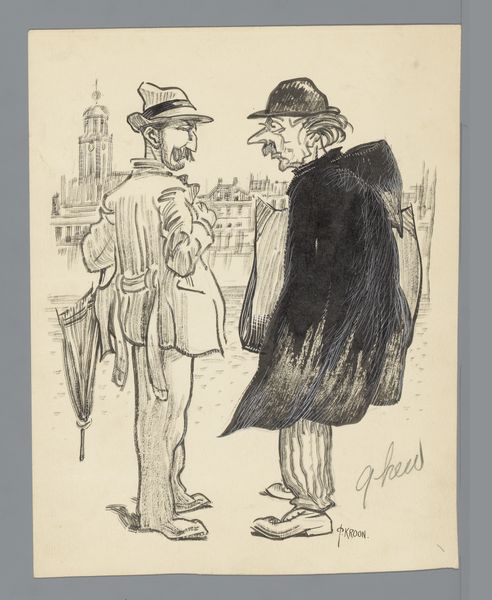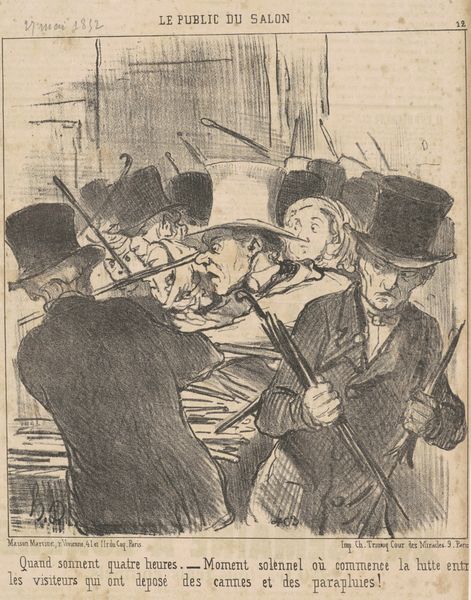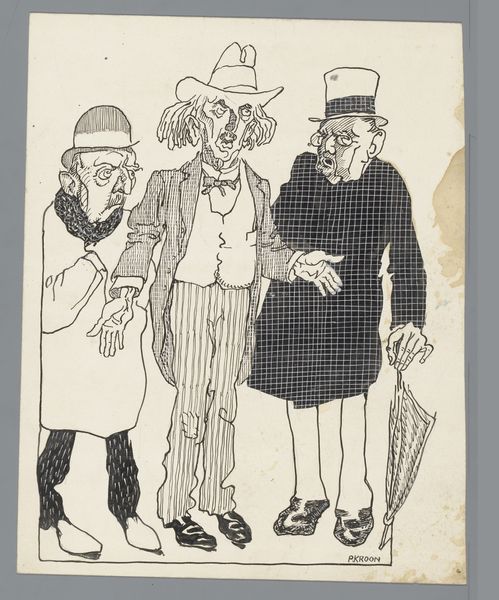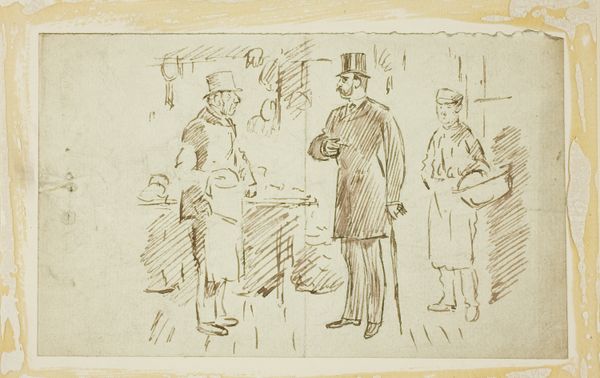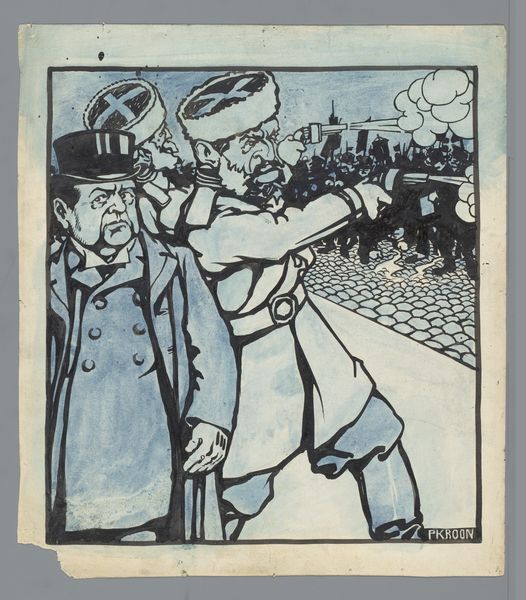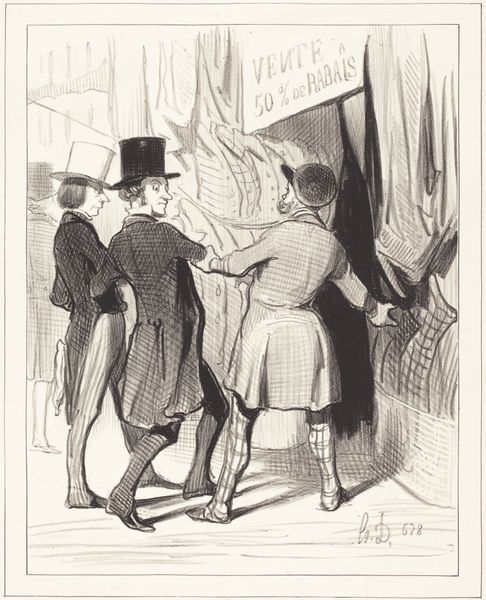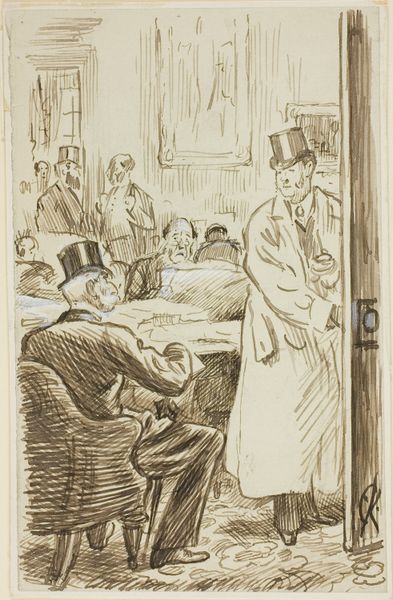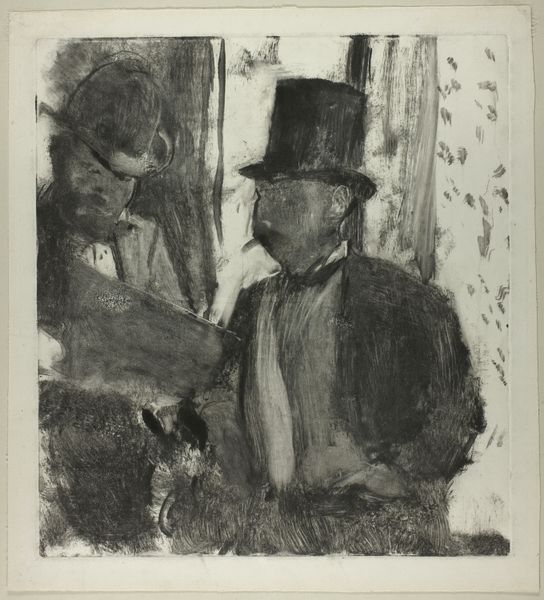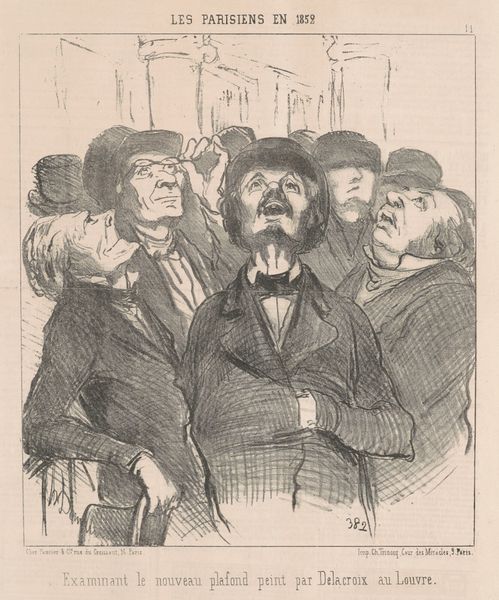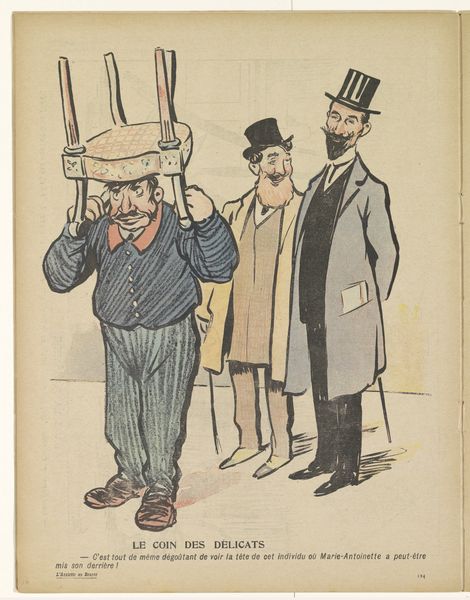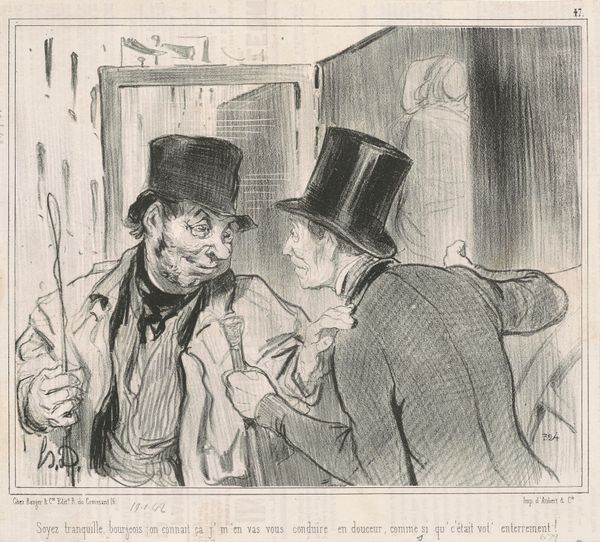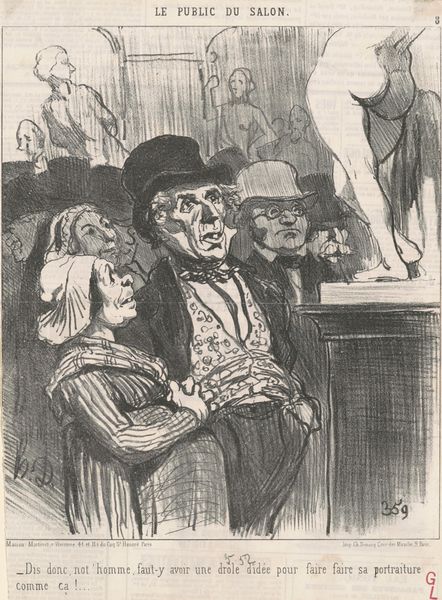
Dimensions: height 271 mm, width 219 mm
Copyright: Rijks Museum: Open Domain
Curator: What strikes you first about this work, titled "Mannen op straat," which loosely translates to "Men on the Street?" It's a watercolor and drawing, believed to be created by Patricq Kroon sometime between 1920 and 1930. Editor: The visual imbalance. The severe elongation and compression of facial features, alongside stark monochromatic washes, imbue the image with a certain nervous energy. Curator: Kroon employs caricature here, magnifying certain features. Notice how the central figure seems almost spectral, rendered in lighter washes compared to the intense detail given to the figure on the left. It’s as if their social standing dictates their presence in the picture. Editor: The layering of washes directs the viewer's eye too, right? I'm particularly interested in how Kroon handles negative space, or its absence, in this composition. The almost absent background pushes these characters forward, underscoring a potential feeling of social claustrophobia, perhaps? Curator: I see your point. This image may mirror public anxieties present at that time. After the first World War, societal structures were drastically transforming, so one way to read the distortion might point to a sort of moral distortion, but that’s not to say Kroon criticizes, per se. Perhaps more observes? Editor: Or is critiquing. Notice how Kroon’s lines are more like semiotic markers? Elongated noses, pursed lips—each line communicates an entire history of class anxiety and perhaps even a sense of impending social collapse. How might this commentary circulate in a society on the precipice of further social disruption? Curator: A pertinent question! There is something unsettling here. Considering the prevalence of art nouveau stylistic elements during this period, which often featured themes of urban life, could the caricature represent a darker counter-narrative to the celebratory depictions often seen? Editor: That’s entirely plausible. Ultimately, the value of this work resides not only in its formal qualities—the brushwork, the use of color—but in the questions it poses about how individuals negotiate the rapidly evolving public space. Curator: Indeed, "Mannen op Straat" serves as a powerful commentary—an introspective snapshot, a stark reflection on society as it grappled with modernity. Thank you, that helped shed some light for me.
Comments
No comments
Be the first to comment and join the conversation on the ultimate creative platform.
